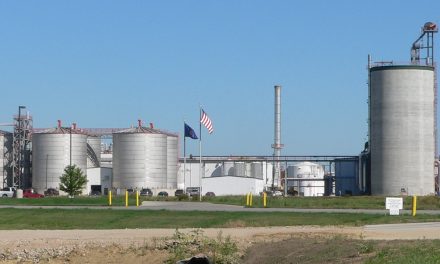Analysis by Dr. Nancy Yamaguchi
Crude and product prices rose significantly this week, opening higher each day Tuesday through Friday. West Texas Intermediate (WTI) crude prices opened today above $49 per barrel (/b) for the first time since May 31. Diesel opened above $1.60/gallon for the first time since May 25. Gasoline also opened at its highest price since May 25.
WTI crude opened at $49.17/b this morning, up 47 cents, or 0.97%, from yesterday’s opening value. Prices are $49.10/b currently, down by 7 cents from today’s opening. Crude and product prices are strongly up for the week. As of the time of writing, WTI is up by $3.48/b for the week, diesel is up by 9.47 cents/gallon and gasoline is up by 9.3 cents/gallon.
WTI crude prices opened the week at $45.62/b. WTI opened this session at $49.17/b, an increase of $3.55, or 7.8%, from Monday’s opening. During the week, prices ranged from a low of $45.40/b on Monday to a high of $49.24/b on Thursday, a range of $3.84. Prices are $49.10/b currently, down by 7 cents so far today.

Diesel prices opened Monday at $1.5186/gallon. Diesel opened this morning at $1.6049/gallon, strongly up by 9.02 cents, or 6.0%, for the week. Prices ranged from a low of $1.5023/gallon on Monday to a high of $1.6102/gallon on Thursday, a wide price range of 10.79 cents. Diesel prices are $1.6094/gallon currently, up by 0.45 cents from today’s opening price.

Gasoline prices opened Monday at $1.5575/gallon. Gasoline opened today at $1.6438/gallon, a large increase of 8.63 cents, or 5.5%, for the week. Prices ranged from a low of $1.5444/gallon on Monday to a high of $1.6488/gallon on Thursday—a very large range of 10.44 cents. Gasoline prices are $1.6505/gallon currently, up by 0.67 cents from today’s opening.

Prices began to climb early this week when two key industry sources showed declining crude oil inventories. The price rally continued when the Energy Information Administration (EIA) released official data for the week ended July 21. The EIA reported across-the-board drawdowns: 7.208 million barrels (MMbbls) of crude, 1.015 MMbbls of gasoline and 1.852 MMbbls of distillate. The net drawdown was 10.075 MMbbls.
The EIA data greatly exceeded Monday’s DTN industry survey, which had predicted a stock drawdown of 2.7 MMbbls of crude, 1.2 MMbbls of gasoline and 2.5 MMbbls of diesel. In net terms, it also exceeded the American Petroleum Institute (API) data, which reportedly showed a massive 10.2-MMbbl drawdown of crude stockpiles, but a minuscule draw of 0.11 MMbbls of distillate, and an addition to gasoline inventories of 1.9 MMbbls.
The EIA also reported a 19-thousand-barrel-per-day (kbpd) decline in U.S. crude production, showing production of 9,410 kbpd relative to 9,429 kbpd during the week ended July 14. The crude balance was also shifted into deficit when crude exports increased to 1,030 kbpd and crude imports increased by only 48 kbpd for the week. Net crude inputs to refining rose by 166 kbpd.
Apparent demand for gasoline rose by 229 kbpd during the week, bringing average consumption to a very high 9,821 kbpd. Diesel demand rose by 42 kbpd during the week, rising to 4,376 kbpd.
Oil prices have received support from a weaker U.S. Dollar The U.S. Dollar index has been generally trending down since April. Over the past month, it has decreased by 2.6%. The Federal Open Market Committee (FOMC) released its July 26 statement, noting moderate economic growth, past improvements in the labor market and modest expansion of household and business spending. Inflation was below the target 2%. As expected, the FOMC did not change the interest rate. The FOMC also hinted that it might start tackling its balance sheet relatively soon, which is being interpreted as perhaps in September.
The Bureau of Economic Analysis has just released second quarter U.S. GDP figures, showing 2.6% growth in their advanced estimate. Analysts had forecast 2.7% growth. The BEA also revised their first quarter GDP figure downward to 1.2% from 1.4%.









